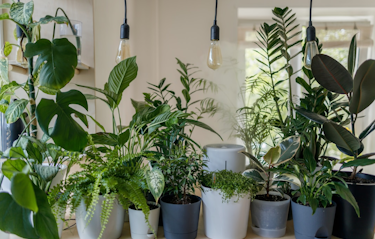
How To Trim Pothos
- Easy Care
- Araceae
- Large
- Evergreen Tropical Vines
We independently select everything we recommend. When you buy through our links, we may earn a commission.
If you have a bamboo plant that is turning yellow, possible causes are overwatering, underwatering, or lacking nutrition.
Published on 10 August, 2023 by Oliver Rouane-Williams
Bamboo (specifically lucky bamboo) is a popular indoor plant that is supposed to bring good luck and fortune to the home. Some signs your bamboo plant is sick include:
Lucky bamboo plant turning yellow
Discoloration in the stems (yellow stems)
Dry or wilting leaves
Stalks beginning to wrinkle
There are several common reasons that may cause your bamboo plant to turn yellow:
Too much water and poor soil drainage can cause root rot and yellow parts to appear on the leaves. If this is the culprit, you may also notice yellowing bamboo culms (the woody, ringed stems of the plant).
Stop watering immediately and allow the plant to dry out. Allow the top couple of inches of the soil to dry out between waterings.
Ensure that your plant has good drainage to avoid stagnant water. Use well-draining soil and a pot with ample drainage holes when repotting your bamboo.
Bamboo plants are not drought tolerant, so they need plenty of water to promote healthy growth. Dry soil can cause the entire plant to begin to wilt and yellow, but unlike other common reasons, this will usually cause the leaves to turn brown and crispy. Luckily, this problem is easily resolved.
Water your bamboo plant more often. Generally speaking, you should water your bamboo 2-3 times per week.
If you live in a hotter area or have them in a warm part of your house, you may need to water more frequently.
Bamboo plants are rather picky when it comes to soil, despite the fact that they are invasive plants. They do best in rich, acidic soil that is somewhat loamy. If there is a lack of nutrients in their soil, their normally green leaves may begin to yellow and wilt.
Plant your bamboo plant in an acidic and loamy soil that is rich in nutrients.
Regularly apply compost to provide enough nutrients for healthy growth. (Organic compost is great for this.)
Pest infestations are another common reason for a yellow lucky bamboo plant. Some common pests for bamboo plants are spider mites and aphids, which are very small and difficult to spot.
For spider mites, you can use a miticide to kill them, and for aphids, you can use a pesticide.
Neem oil can be applied to your bamboo leaves to ward off these pests.
Spraying cold, fresh water on the leaves can help get rid of the pests.
You can use insecticidal soap on your bamboo plants.
Bamboo typically requires direct sunlight and high humidity to thrive. However, there are some species that can tolerate lower light conditions. If your lucky bamboo leaves or another indoor bamboo plant’s leaves are turning yellow, they may not be receiving enough light or the humidity may be too low for them.
Move your plant to a different location. As stated, different types of bamboo plants require different light conditions. Lucky bamboo, for example, requires bright indirect light to thrive. Some species of bamboo prefer direct sunlight over indirect sunlight. You can experiment with different places in your home to see which has the best results.
Try placing your bamboo near a bright window that receives several hours of sun every day.
If the humidity in your home is too low, use a humidifier or pebble tray to increase the moisture in the air.
You can mist your plants to increase the humidity.

Bamboo requires very little fertilizer. If you fertilize your plant too much, it can burn the roots and cause yellow leaves.
If you notice this issue, stop fertilizing your plant right away.
Only fertilize your plant about twice a year.
If you are watering your bamboo plant with regular tap water, you may be using more than just water. There are several chemicals found in tap water such as chlorine and fluoride which can cause your bamboo to turn yellow.
Switch from tap water to distilled water or filtered water right away.
Unfortunately, if part of your bamboo plant has turned yellow, it will not be able to turn green again. However, if you take care of the issue right away, you can see new growth and new leaves that will grow green and healthy.
It is a good idea to prune yellow leaves in small sections to restore the plant’s green, healthy look. If your lucky bamboo stalks are yellow but still sturdy, you can leave them in place. However, bamboo stalks or culms that have become soft should be pruned to prevent disease.
Yes, you can prune small sections of your yellowing bamboo plant to restore some of its green appearance. However, avoid trimming too much or you will have a very bald plant.
One of the most common diseases in bamboo is rot issues, including root rot and heart rot. Root rot affects the lower part of the stalk, while heart rot can occur in any part of the stem.
Delivered to your inbox every Saturday morning








